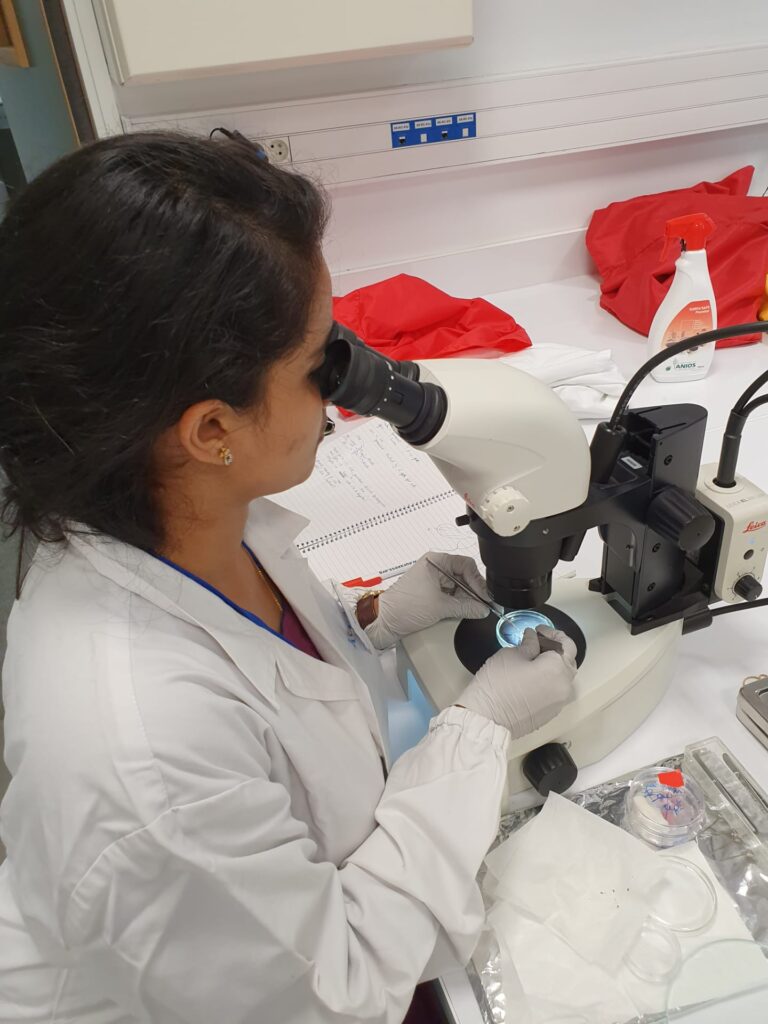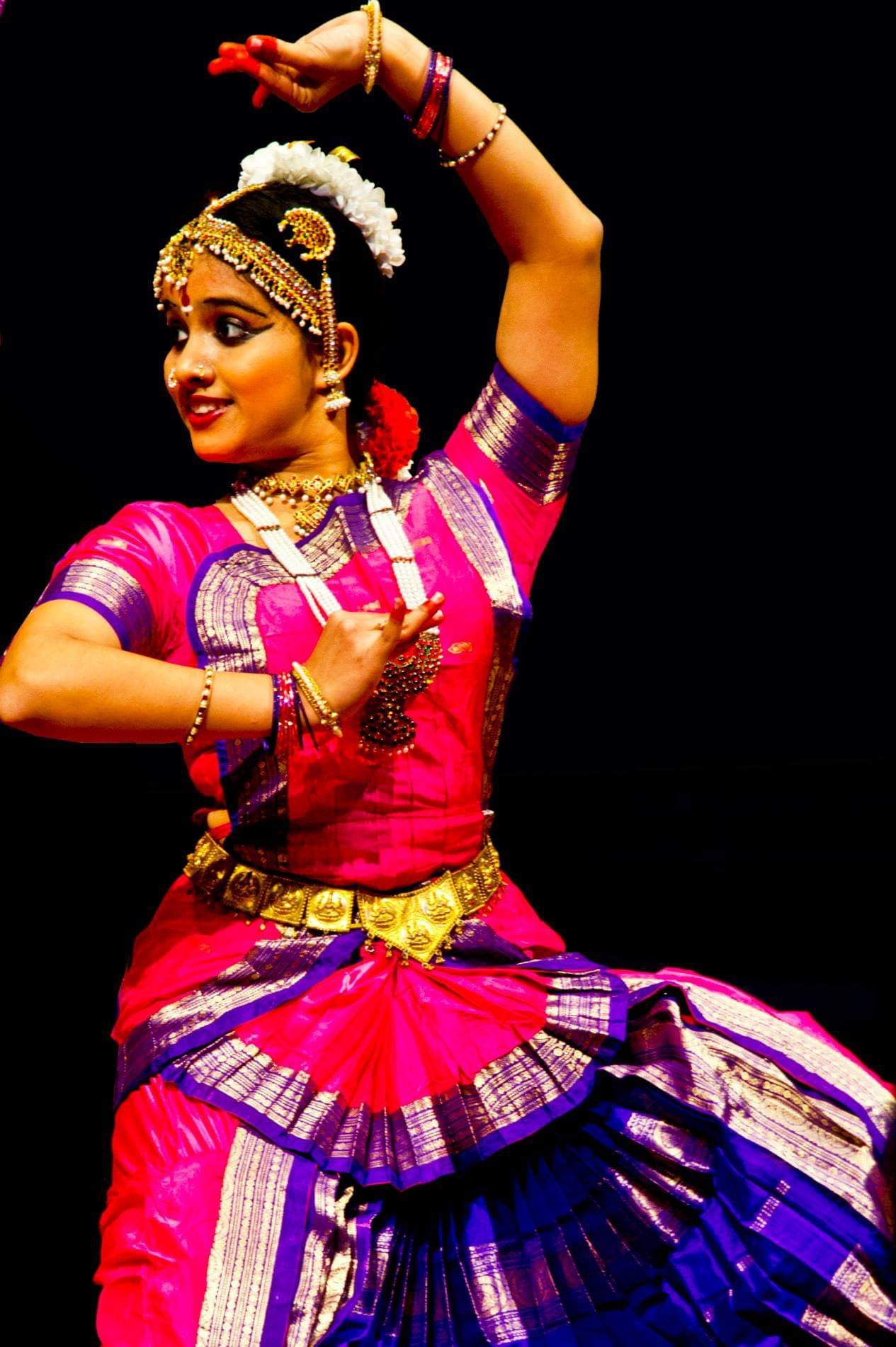Hello, Nitya! Welcome to the InSDB community.
Tell us about yourselves! What is your background and what has been your journey so far?
Hello! I received my undergraduate degree in Biological Sciences from Sri Venkateswara College at the University of Delhi. I then joined Amrita School of Biotechnology for my Master’s in Biotechnology. This was an absolutely transformative experience, thanks to the professors who taught me. From having no idea of what I wanted to do next when I joined (which is why I chose broad degrees for both my B.Sc. and M.Sc), by the end of my first semester, I was already preparing myself to do a Ph.D. Towards this, my master’s thesis was at Prof. Shubha Tole’s lab at TIFR. I continued in her lab for a year as a JRF and this was when I was introduced to the fascinating field of developmental biology. This was also when I had the opportunity to attend my first InSDB meeting since it was hosted at TIFR that year. I subsequently moved to inStem at the vibrant BLiSC campus for my Ph.D. with Dr. Ramkumar Sambasivan (current secretary of InSDB). After defending my Ph.D. thesis during the COVID period, I joined the lab of Dr. Fabienne Lescroart at the Marseille Medical Genetics unit, Aix-Marseille University in France. I had closely followed Fabienne’s work during my Ph.D. and was thrilled when she advertised for an open postdoc position! It was Fabienne who strongly encouraged me to apply for academic positions, and at the end of my postdoc, I returned to India and joined SRM Institute of Science and Technology as an Assistant Professor in the Department of Biotechnology.

Tell us about your research field and your work during your PhD and postdoc.
I have always been fascinated by cell fate choices, and how cells integrate information from their environment to make these choices about their developmental fate. My research during both my Ph.D. and postdoc was centered around this question. We studied anterior mesoderm — a set of progenitor cells that arise in the early vertebrate embryo, at the critical stage of gastrulation. Even at the gastrulation stage, the cells that eventually form the heart—cardiac progenitors, in the anterior mesoderm— are heterogeneous, meaning these cells are already specified to be different parts of the heart. The different subpopulations of cardiac progenitors also have different expressions of signaling ligands and transcription factors, but we still do not know exactly how these signals are transmitted to specify cell fate. We used a variety of techniques to demonstrate that the different cardiac subpopulations require distinct signaling intermediates to function in a precise temporal and spatial manner for normal cardiac development.
The cardiopharyngeal mesoderm, a part of the anterior mesoderm, is unique in its ability to contribute to both the heart and muscles of the head. However, we did not know the signaling ligands that specified the cardiopharyngeal mesoderm as distinct from the posterior mesoderm. Using a combination of in vivo and in vitro techniques, we found that the inhibition of signals that promote posterior identity allows these progenitor cells to develop an anterior identity. We also used these inhibitory signals as a tool to evaluate the presence of anterior mesoderm in an evolutionarily ancient model system – the cephalochordate Amphioxus, that represents the best proxy for the chordate ancestor. This is an international collaborative project that is still ongoing.
Understanding how the signaling mechanism specifies the identity of the anterior mesoderm allowed us to derive the cardiopharyngeal mesoderm cells from embryonic stem cells in vitro. We confirmed that these progenitors were indeed of cardiopharyngeal identity by noting that they differentiated into cardiac and skeletal cell fates. During my PhD, I did this differentiation in vitro in 2D, and during my postdoc, I used 3D self-organizing gastruloids. These experiments also led to the identification of a novel signal that specifically promotes muscle formation in cells from the anterior mesoderm.

Can you elaborate on the project where you are trying to find the presence of anterior mesoderm in Amphioxus? What are your goals with the project, in terms of understanding the evolution of these cells?
The project is an evo-devo project—to compare and contrast development in evolutionarily distant species to be able to draw conclusions about the emergence and evolution of a particular cell type. The goal was to establish if common progenitors of the heart-equivalent and skeletal muscle exist in the Amphioxus embryo. Given that Amphioxus is a proxy for the chordate ancestor, this would suggest that the progenitors of interest emerged at least at the base of the chordate lineage.
You are now an assistant professor at SRM. When did you join SRM, and how has the experience been so far?
It has been less than a month since I joined SRM! It has been an interesting experience so far. While I have experience mentoring students in research one-on-one, this is my first time teaching basics to a larger group.
What is it like to be an educator? How has the transition been?
I am teaching both theory and practicals for undergrads. To be honest, I am thoroughly enjoying the experience! I have always enjoyed interacting with people and exchanging knowledge. Even when I mentored students one-on-one, one of the best parts was helping them arrive at an answer to a question that they had. With a larger group, it is gratifying to see more and more students respond in subsequent classes. However, I have begun to realize that a particular thought process/approach to answering a question may work for a majority in the class, but will not necessarily work for everyone. I am learning how to balance a mix of approaches so that everyone is on the same page by the end of the class.
Are you also running a lab at SRM?
My responsibilities for this semester are primarily teaching responsibilities, but I look forward to setting up my lab at SRM in the near future.
As an undergraduate educator, what are some of the ways in which InSDB can increase our outreach activities with the undergraduate population?
Many undergrads are being exposed to the subject of developmental biology for the first time. I believe they would benefit greatly from workshops where they can hone their skills and experience the excitement of studying developmental biology in a real-life setting. Other activities such as photo competitions, quizzes, and social media-friendly content would possibly attract their attention.
Is there a particular initiative you would like InSDB to take up?
A society journal would be a wonderful addition! It would provide the space to discuss the most recent developments in the field, as well as share research results with the community.
Apart from your work, what keeps you excited? What are your hobbies?
I am a trained Bharatnatyam dancer with a scholarship from the Ministry of Culture, Govt. of India. I used to perform regularly until the end of my Ph.D. at all the institutions I have studied/worked at. I have performed less frequently in the last few years (due to COVID, postdoc abroad, etc.) but I still try and practice regularly. If I am not dancing, you will usually find me curled up in a corner with my book/Kindle.

—
You can connect with Nitya here.





